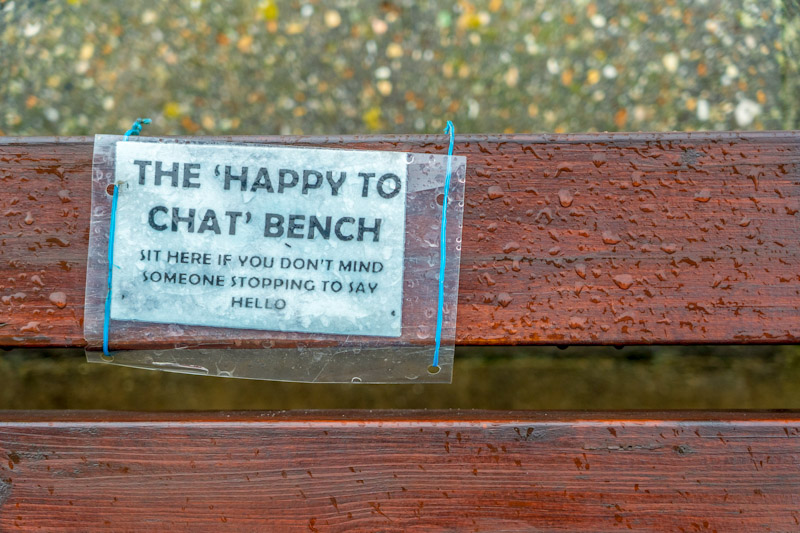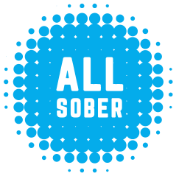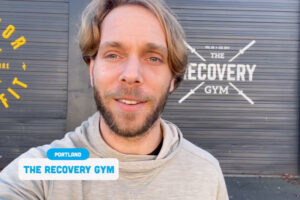Communication and Setting Boundaries in Recovery: This Might Clear Things Up
No need to yell — or roll over. Getting your point and your needs across is essential to getting meaningful support in recovery

Recovery is always a great opportunity to go back to basics. With some clarity and time, you can rethink some pretty elemental things that you may have convinced yourself you’re just no good at. Are you simply doomed to sleep poorly? Is it just “the reality” that you have to be anxious all the time? Not necessarily.
Communication goes in this bucket too: Maybe you think you’re wired to be a people pleaser or aloof — or a hater or a shouter — and that’s that. But by applying a little of the ol’ mindfulness to how you interact and articulate yourself, you’ll find you make yourself heard a little better and stride through situations that used to set you on edge. Your relationships may brighten as well. There’s a reason they’re always talking about this stuff in the self-help books.
In the recovery process, communication is an important, even essential, skill for healthy, sustainable sobriety. Effective communication helps you voice your needs and advocate how you can be supported. Communication also helps you set boundaries for yourself and others — which in turn allows you to create guidelines for continued success, and to outline how others can be part of that process. Neat how that works.
Look Who’s Talking Now: Communication Styles
It’s fairly difficult to boil down and bullet-point a concept as universal and infinitely varied as “communication,” but for our purposes, let’s examine two types of communication and three styles of communication.
The two types of communication are verbal and nonverbal. Verbal communication is exchanging information through words, songs, noises or other outward expressions. Nonverbal communication is the transfer of information through gestures, posture, looks or placement of people or objects.
Humans communicate verbally and nonverbally regularly — pretty much nonstop — but verbal communication is more obvious, as you are conscious of it occurring. However: Nonverbal communication occurs more often. Straightforward enough.
Our three styles of communication are passive, aggressive and assertive.
1) Passive Communication
Passive communication is when you don’t communicate about a problem directly. You might communicate nonverbally, leaving notes or making vague comments alluding to your feelings. The comments made may be in passing or not directly connected to a situation, which doesn’t give others the chance to respond appropriately. They can’t read your mind.
2) Aggressive Communication
Aggressive communication is, or seems, straightforward and can be hostile or forceful. You need to make your voice heard and your feelings known in the moment, no matter how alienating or off-putting you may be, yelling, swearing, insulting people. Combining these two styles is called being “passive-aggressive,” which is basically being mean, snide or rude in a passive, indirect way.
These communication styles negatively affect people by causing more conflict. Perhaps more importantly, they don’t tend to work that well for actually, you know, communicating what you want to get across.
3) Assertive Communication
The most effective communication is assertive communication. This style is direct but not aggressive. It is a clear way to communicate what you think or feel and doesn’t allow for misinterpretation. Assertive communication brings the conversation to the surface, addresses what needs addressing and helps detail any next steps, if needed, without blame, shame or guilt.
Learning how to communicate assertively in recovery will give you the chance to have difficult conversations, speak your mind, share your feelings and promote healthy dialogue with those around you.
How To Fence Your Garden: Types of Boundaries
As mentioned, effective communication is important in setting boundaries. Boundaries exist in every kind of relationship: friends, family, romantic partners, colleagues and so on. These boundaries can be porous, rigid or healthy. How you set boundaries impacts how you interact and engage with those around you. So let’s look deeper into each type of boundary.
1) Porous Boundaries
Porous boundaries are flexible and can be passed — or trampled — with ease. This kind of boundary allows others to do or say as they please without considering your feelings or needs. Using a garden analogy, porous boundaries are string fences around your flowers. People step over them and get into your garden whenever they like, regardless of your expectations.
2) Rigid Boundaries
Rigid boundaries are secure; there is no flexibility and they do not budge. They deter others from engaging with you and limit your opportunities for change or growth. In this garden, the fence is a solid concrete wall with barbed wire. Rigid boundaries are difficult to maintain and can be unrealistic. They push people away and can limit meaningful interaction with others. Your garden becomes a lonely place indeed.
3) Healthy Boundaries
Healthy boundaries are what you should strive for. With healthy boundaries, you set your expectations and offer options and solutions to those around you, whether they choose to follow those guidelines or not.
This fence is wooden with a gate (looks very nice!). There is a structure that prioritizes meeting your needs; the gate provides control, but doesn’t shut everyone out. Healthy boundaries aren’t just about getting what you want when you want it. They make space for growth through communication, encouraging people to work with you.
In recovery, healthy boundaries will enable you to maintain or start relationships with others while prioritizing your sobriety and not allowing anything to jeopardize it.
How Do I Set Boundaries?
Setting boundaries starts by communicating with … yourself. What are your needs? Who are your supporters? What do you want your sobriety to look like? What are potential triggers for you? These are just a few questions you should ask yourself.
In answering these questions, you create your first boundary: prioritizing your needs. Once you have established these needs and developed a plan for recovery, you can then set healthy boundaries with others to help you thrive through the process as best you can.
Heads up: The most difficult boundaries to set are usually with family and friends, the folks you’re closest to, who truly want to support you. But they can struggle with boundaries because there may never have been any.
When setting boundaries, be calm and consistent, advocate for yourself and use assertive communication. Assertive communication is your best chance at letting others know a boundary has been established.
Here’s an example. Try sitting down with your support system and sharing your recovery plans. Sharing this with them informs them of how they can best support you. This approach sets boundaries without blame or shame.
Perhaps, in this example, having cash is a trigger for your substance use. Explain to family and friends your expectations for them to support your sobriety and not engage that trigger. This boundary encourages support and outlines what you need from that person or group of people. Don’t forget this only works if you also respect the boundary.
Establishing boundaries is a learning process. You might not get them right the first time, and that’s OK. Sometimes you won’t know what boundary you need to set until you set the wrong one. Give yourself room to grow in this process and permit yourself the opportunity to learn as you go. In recovery, never be afraid to reach out for support, open the lines of communication, and be willing to adapt along the way.
We each have only one garden. Make yours a place where you want to spend time.
More Lifestyle
The Joy of Baking (Sober)
Two months sober, Annie Zimmerman decided to make cookies. Now, her hobby turned passion yields fulfillment, connection and delicious soberversary cakes. Read the interview!
Sure-Bet Sober Date Ideas
Ready to get back out there? Sober dating isn't so hard. But here are a few pointers anyway, to help you find your groove.
Now Elite NFL Players, They First Tackled Addiction | News Roundup
All Sober compiles the best of the latest headlines. Here's your addiction and recovery news for the week of Feb. 19, 2024!
All Sober in Chicago
A great town for recovery, come sun, rain or snow! Check out our video guide to the Windy City's best sober options for bars, bottle shops — and even an arcade with vintage games.
All Sober in New York
The Big Apple truly has it all — including a sober bar with a "witchy vibe" and an array of enchanting non-alc cocktails. Take a peek in our video guide to the sober city!
All Sober in Portland
Oregon's cultural capital may be weird and proud, but it's sober and proud too! We scoped out the coolest sober-friendly spots in our new video guide.
Running Toward Recovery
Seeking purpose in early recovery, Annie Zimmerman rekindled an old fire with distance running — and found it carried her through some of her toughest trials in sober life.
Delicious Nonalcoholic Drinks Recipes for a Classy (or Cozy) Winter's Eve
Mixology stars Derek Brown and John deBary have refined the art of sober-friendly, zero-proof concoctions for grown-ups. They shared some favorite recipes for the season with All Sober.










